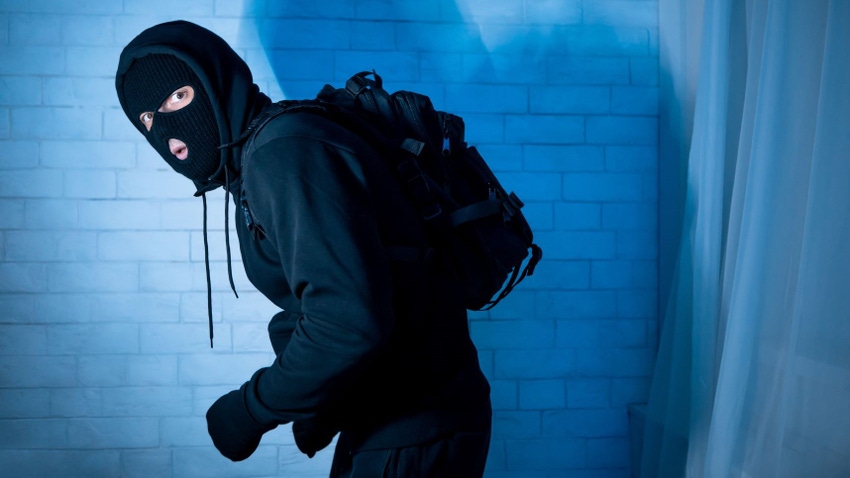Self-Storage Crime Fighting in 2024: It’s Time to Up Your Game on Prevention and Response!
Criminals are always looking for their next big score, and self-storage facilities can look like pretty attractive targets, what with their units full of goods and minimal staff presence. There’s seemingly no rest for bad actors, so it’s time to up your game on crime prevention and response! Here are some ways to fortify your property and avert potential problems.

When choosing a self-storage facility, consumers look for a place that seems safe, one where they feel protected and can confidently leave their belongings. It’s the primary reason why so many operators use words like “secure” or “guard” in their brand name. But it takes more than a name to earn a good reputation. A preventive approach to crime is a crucial element when it comes to establishing a business customers believe they can trust.
Self-storage properties can be targets for a wide range of criminal activities. While some are opportunistic, others are premeditated, posing various levels of risk to facility operators. Some of the biggest threats include:
Theft
Vandalism
Illegal dumping of waste or hazardous materials
Drug storage, production or distribution
Unauthorized occupancy (loitering)
Illegal habitation
Arson
Assault
Your goal as a self-storage owner or manager is to ensure that engaging in misconduct at your location isn’t worth the risk, even for the most determined bad actors. Following are some strategies for prevention as well as steps to take during and after an incident.
Be Vigilant
To deter criminal activity at your self-storage facility, you need to take meaningful measures to protect people and property. A proactive approach will help build your reputation as an operator who’s serious about security. Your first line of defense? Your onsite team! Everyone who works at the property should be on the lookout for these red flags:
Unusual visits: Be wary of individuals who visit the facility frequently without a legitimate reason for doing so. They could be scouting for vulnerabilities.
Loitering or lurking: People who linger near storage units or common areas without a clear purpose may be observing security protocols or waiting for an opportunity to commit a crime.
Multi-person unit access: If several people are seen accessing the same self-storage unit, especially at odd hours or without a valid explanation, it could signal unauthorized use or illicit activity.
Unusual vehicles: Pay attention to cars, trucks and bikes that don't belong to tenants or others who regularly visit the facility.
Door tampering: Any attempt to meddle with locks, pry open doors or otherwise gain unauthorized access to units should prompt investigation.
Unsolicited offers for assistance: Be wary of anyone offering unwanted help or services to tenants, as they may be attempting to gain access for nefarious purposes.
Erratic behavior: Individuals exhibiting nervousness or agitation or avoiding eye contact when approached may have something to hide.
Use of disguises: Wearing hats, sunglasses, masks or other costumes to conceal one's identity may indicate an intent to avoid detection or surveillance.
Abandoned or suspicious items: Any unattended bags, boxes, bins or other items left on the property should be investigated promptly.
Violation of facility rules: Any behavior that goes against your policies and procedures, such as loitering after hours, carrying prohibited items or propping open doors, should be addressed and documented.
By watching for signs of suspicious activity, you can better protect your self-storage facility and ensure the safety of staff, customers and stored belongings. In addition, encourage your tenants to report any unusual or concerning behavior they observe. Security requires all hands on deck!
Partner With Police
Establishing strong relationships with local law enforcement can greatly enhance the security of your self-storage facility. Consider collaborating with the police and fire department through community-outreach programs. Share any incident reports you create and participate in crime-prevention workshops. This will foster a sense of partnership and encourage timely response to your security concerns when they arise. Additionally, having a designated liaison for communication with law enforcement streamlines coordination when there’s an urgent situation.
Use the Right Tools
To help your self-storage team be vigilant and keep the property safe, consider investing in the following security tools. Most are considered essentials in the industry today, though many now have advanced options available due to advancements in technology.
Perimeter fencing. Fencing establishes clear boundaries and restricts unauthorized access, making it harder for criminals to enter the premises undetected. Choose a barrier that’s sturdy, tall enough to deter climbing, and equipped with anti-tamper features such as barbed wire or sensors. Conduct regular inspections to check for damage or breach.
Access control. This system regulates entry to the property, limiting access to authorized individuals. Choose one with multiple layers of authentication including keypads, access cards, biometric scanners or electronic locks. Regularly update access credentials and revoke access for former tenants or employees. Today’s smart systems use cloud-based platforms for enhanced security and operational efficiency, allowing tenants to lock or unlock units with a mobile device.
Lighting. Adequate lighting enhances visibility and reduces hiding spots, creating a sense of surveillance. Distribute bright fixtures evenly over all areas of the property including parking lots, hallways and entry points. Promptly replace burnt-out bulbs or damaged fixtures.
Cameras. These provide constant vigilance, allowing you to capture and review footage. They help you identify clues that illegal activity may be going on at your self-storage facility, but only if used correctly.
First, opt for high-resolution cameras with wide coverage angles and place them strategically throughout the property to ensure all areas are covered. Regularly check their functionality and study the recordings. This is essential! If you need help, new products powered by artificial intelligence promise to scan your video feeds and automatically flag suspicious activities, sending you an alert.
Drones. To really take your surveillance system up a notch, consider drones for their aerial capabilities. This enables a quick, efficient view of large areas. Drone use can also be coupled with remote monitoring for real-time visibility into facility activity from anywhere.
Door locks and alarms. Ensuring that your tenants use the right type of lock—properly—is essential to site security, so consider making it a requirement. When selecting products to sell, look for high-quality mechanisms that are resistant to cutting, picking or drilling. Disc or cylinder locks specifically designed for self-storage are recommended for their durability and tamper-resistant features. Individual unit-door alarms add an extra layer of security, alerting staff to unauthorized access attempts.
Security guards. While not a common feature at self-storage facilities due to cost, dedicated security personnel provide a physical presence and immediate response to threats or emergencies. They can monitor your facility as part of a patrol route and be on call to respond to alarms or other situations.
Audit Your Access-Control Logs
Your self-storage facility’s access logs, containing meticulously documented entries and exits, can be instrumental in detecting suspicious behavior. When reviewed regularly, these vital tools will help you identify unusual patterns, unauthorized or failed entry attempts, access from restricted areas, prolonged stays, and off-hour visits. Any of these can signal security threats such as a potential break-in, someone attempting to live in a unit or other illegal activity.
Consistently comb through your access logs to spot anomalies, and then promptly investigate any discrepancies. You might also implement automated alerts for specific access activities, which can enable you to respond swiftly to potential threats and safeguard the facility's integrity and safety.
Establish Response Protocols
Despite all of these efforts, incidents of crime may still occur at your self-storage property; so, you need clear protocols for handling emergencies, including when it’s appropriate to contact law enforcement. Some situations may be simply resolved by issuing a warning to the offending party or demanding that they leave the premises. Others are more serious and require an immediate police response.
First and foremost, prioritize the safety of your tenants and staff. Afterward, document the event, assessing any damage or losses, and communicate transparently with affected tenants. These essential post-crime steps will help mitigate the negative impact and restore trust.
Protecting a self-storage facility from crime requires a multi-faceted approach that encompasses prevention and response. By remaining vigilant, partnering with police, implementing robust security and monitoring your access-control data, you can create a safer environment and mitigate the risk of incidents.
Al Harris is the editor of Storage Beat and content manager at Storable, an Austin, Texas-based supplier of cloud-based access control as well as management software, marketing services, payment processing, website development and other services. He obtained his degree in journalism from Virginia Commonwealth University. He loves reading Elmore Leonard novels and listening to classic country music. For more information, call 888.403.0665; email [email protected].
About the Author(s)
You May Also Like







